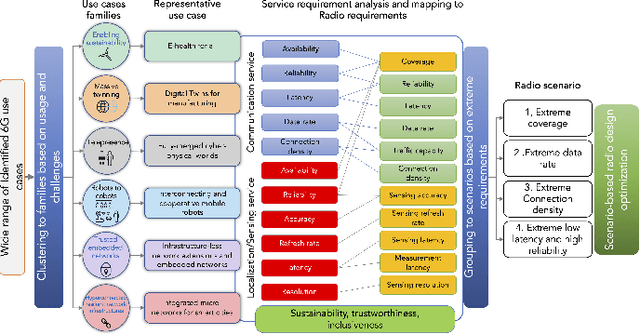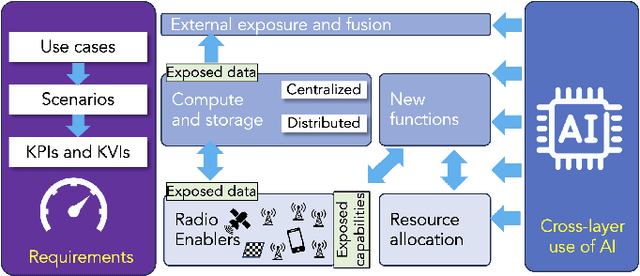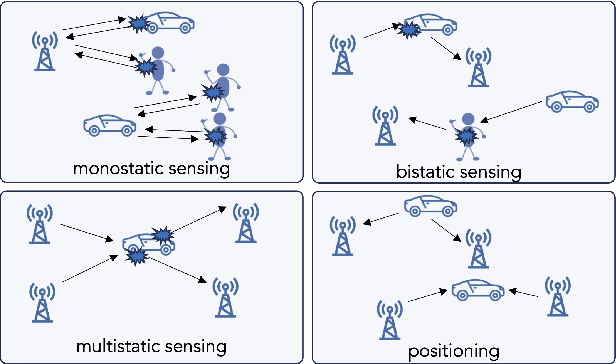Mohammad H. Moghaddam
Integrated Communication, Localization, and Sensing in 6G D-MIMO Networks
Mar 28, 2024



Abstract:Future generations of mobile networks call for concurrent sensing and communication functionalities in the same hardware and/or spectrum. Compared to communication, sensing services often suffer from limited coverage, due to the high path loss of the reflected signal and the increased infrastructure requirements. To provide a more uniform quality of service, distributed multiple input multiple output (D-MIMO) systems deploy a large number of distributed nodes and efficiently control them, making distributed integrated sensing and communications (ISAC) possible. In this paper, we investigate ISAC in D-MIMO through the lens of different design architectures and deployments, revealing both conflicts and synergies. In addition, simulation and demonstration results reveal both opportunities and challenges towards the implementation of ISAC in D-MIMO.
Joint Communication and Sensing for 6G -- A Cross-Layer Perspective
Feb 14, 2024



Abstract:As 6G emerges, cellular systems are envisioned to integrate sensing with communication capabilities, leading to multi-faceted communication and sensing (JCAS). This paper presents a comprehensive cross-layer overview of the Hexa-X-II project's endeavors in JCAS, aligning 6G use cases with service requirements and pinpointing distinct scenarios that bridge communication and sensing. This work relates to these scenarios through the lens of the cross-layer physical and networking domains, covering models, deployments, resource allocation, storage challenges, computational constraints, interfaces, and innovative functions.
6G Positioning and Sensing Through the Lens of Sustainability, Inclusiveness, and Trustworthiness
Sep 24, 2023Abstract:6G promises a paradigm shift in which positioning and sensing are inherently integrated, enhancing not only the communication performance but also enabling location- and context-aware services. Historically, positioning and sensing have been viewed through the lens of cost and performance trade-offs, implying an escalated demand for resources, such as radio, physical, and computational resources, for improved performance. However, 6G goes beyond this traditional perspective to encompass a set of broader values, namely sustainability, inclusiveness, and trustworthiness. This paper aims to: (i) shed light on these important value indicators and their relationship with the conventional key performance indicators, and (ii) unveil the dual nature of 6G in relation to these key value indicators (i.e., ensuring operation according to the values and enabling services that affect the values).
 Add to Chrome
Add to Chrome Add to Firefox
Add to Firefox Add to Edge
Add to Edge